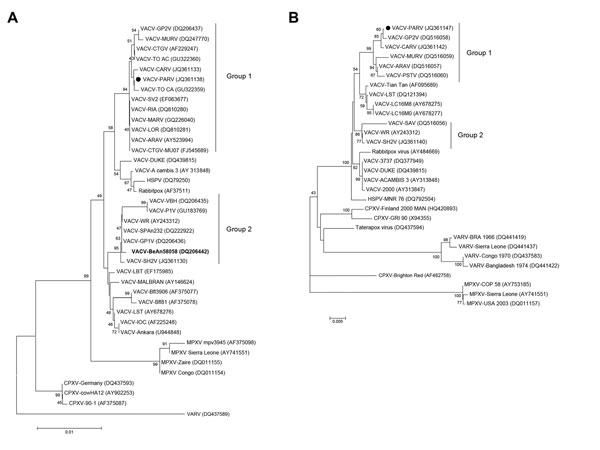Volume 19, Number 12—December 2013
Dispatch
Reemergence of Vaccinia Virus during Zoonotic Outbreak, Pará State, Brazil
Figure 3

Figure 3. . . . Phylogenetic trees based on orthopoxvirus nucleotide sequences of A56R (A) and A26L (B) genes of vaccinia virus (VACV), Pará State, Brazil. Pará virus (PARV) clusters with VACV group 1 from Brazil. Phylogenetic analysis showed that PARV (black dots) clustered in the VACV-BR-G1 clade and that BeAN58058 virus (BAV) clustered in the VACV-BR-G2 clade. A26L sequence was obtained only from PARV. Trees were constructed by using the neighbor-joining method, the Tamura-Nei model of nucleotide substitutions, and bootstrap of 1,000 replicates in MEGA version 4.0 software (Arizona State University, Phoenix, AZ, USA). In panel A, BAV is shown in boldface. GenBank accession numbers are indicated in parentheses. Values along the branches indicate bootstrap values. Scale bars indicate nucleotide substitutions per site. GP2V, Guarani P2 virus; MURV, Muriae virus; CTGV, Cantagalo virus; CARV, Carangola virus; MARV, Mariana virus; ARAV, Araçatuba virus; HSPV, horsepox virus; GP1V, Guarani P1 virus; MPXV, monkeypox virus; PSTV, Passatempo; CPXV, cowpox virus; VARV, variola virus.